Gunfight at the O.K. Corral

Brief Synopsis
Cast & Crew
John Sturges
Burt Lancaster
Kirk Douglas
Rhonda Fleming
Jo Van Fleet
John Ireland
Film Details
Technical Specs

Synopsis
Ed Bailey and his two henchmen ride into the small Texas town of Fort Griffin, hoping to avenge the death of Bailey's brother at the hands of noted gunslinger John H. "Doc" Holliday. Holliday's traveling companion, Kate Fisher, rushes to warn the former dentist at his hotel room, but the two instead come to blows when Kate inadvertently mentions Holliday's once-prominent family. Meanwhile, lawman Wyatt Earp arrives in Fort Griffin, and learns that Cotton Wilson, the town's cowardly marshal, released outlaws Ike Clanton and Johnny Ringo from custody three days earlier, despite the outstanding warrants for their arrest. Seeking information on Clanton and Ringo's whereabouts, Wyatt questions Holliday, who refuses to tell the lawman where the outlaws went, as he carries a grudge against the Wyatt family because Wyatt's brother Morgan once threw Holliday out of Deadwood and impounded $10,000 of his gambling winnings. Soon thereafter, Holliday confronts Bailey and challenges him to a gunfight at Boot Hill, but when Bailey attempts to shoot him in the back instead, Holliday throws his knife and kills the cowboy. Arrested for murder, Holliday is saved from a lynch mob by Wyatt, who, along with Kate, helps the gunfighter escape the angry townspeople. Later, back in Dodge City, Kansas, Wyatt is told by his deputy, Charles Bassett, that Holliday and Kate have arrived in town. Wyatt orders the gunfighter to leave, but when Holliday informs him that he is penniless, the lawman allows him to stay if he promises not to cause any trouble. Wyatt's attention is then drawn to another new arrival in Dodge City, the beautiful Laura Denbow. After being told by Wyatt that female gamblers are not allowed within the city limits, Laura is arrested for "disturbing the peace" after a drunken cowboy attempts to come to her defense. Under pressure from Holliday and Bassett, Wyatt has a change of heart and releases Laura, on the condition that she confine her gambling to the saloons' side rooms. Later, Wyatt is forced to deputize Holliday when a local bank is robbed and its cashier killed, as all his deputies are out on a posse with Bat Masterson. As they set up camp for the night, Holliday tells Wyatt that he agreed to come along only to repay his debt to the lawman for saving his life back in Fort Griffith. His opportunity soon arises when the three bank robbers attempt to ambush Wyatt, but are instead killed by the two men. Returning to Dodge City, Holliday learns from Bassett that Kate has left him for Ringo. Despite his anger and injured pride, Holliday keeps his promise to Wyatt and refuses to get into a gunfight with Ringo. Unlike his new friend, Wyatt's love life is on an upswing, as he and Laura soon fall in love. With Wyatt out of town with his new lady love, cattleman Shanghai Pierce rides into Dodge City with his cowboys and begins shooting up the town. When Bassett tries to arrest Pierce, Ringo shoots him. Wyatt then returns to town just as Pierce and his men are breaking up a church bazaar. Outgunned, Wyatt is saved when a well-armed Holliday appears from a back room, and Pierce and his men are quickly arrested. Afterward, Wyatt tells Holliday that he is giving up the law and moving to California with Laura, despite being offered the post of U.S. Marshal. Wyatt then receives a telegram from his brother Virgil, asking for his help in cleaning up the town of Tombstone. Though Laura refuses to go, Wyatt immediately leaves for Arizona, with Holliday following close behind. At Virgil's home, Wyatt is joined by two other brothers: Morgan and James. Virgil tells them that Ike Clanton has rustled thousands of heads of Mexican cattle, but cannot ship them to market as long as the Earps control Tombstone's railway station. All agree that Wyatt should be in charge of the situation, though Morgan criticizes his older brother's association with Holliday. Wyatt, in turn, defends Holliday and insists that the gambler remains welcome in Tombstone as long as he stays out of trouble. Cotton, the new county sheriff, offers Wyatt a $20,000 bribe from Ike if he allows the Clantons to ship their stolen cattle. Refused, Ike and his men then ride into Tombstone, only to be turned away by the Earp brothers. Later, Ringo returns to town with Kate, and Holliday quickly challenges him to a duel, but is stopped by Virgil. Meanwhile, Wyatt heads out to the Clanton ranch to inform Ike that he has been made U.S. Marshal for the territory and orders the crooked cattleman to take his stolen herd back to Mexico. Unable to find any legal loopholes around Wyatt, the Clantons decide to ambush the lawman while he makes his rounds that night, but they mistakenly kill James instead. While questioning Kate about James's murder, Holliday collapses from an attack of tuberculosis. That night, Billy, the youngest Clanton, is sent into town to challenge the Earps to a family duel. Outgunned six to three, Wyatt asks Holliday for help, only to be told by Kate that the bedridden gunfighter is dying. The next morning, Ike, Finn and Billy Clanton, along with Tom and Frank McLowery and Ringo, head into Tombstone to face the Earps. Despite his illness, Holliday joins the Earps as they head for the O.K. corral. The gun battle begins, and Morgan is quickly wounded. In turn, Holliday shoots and kills Finn. His death is quickly followed by that of the two McLowerys. After Virgil is wounded, Wyatt kills Ike with a shotgun blast. Though wounded by Billy, Holliday follows Ringo into a barn and kills him, while Wyatt chases after the youngest Clanton. Billy is then offered a chance to surrender, but he refuses and is killed by Holliday when Wyatt hesitates to shoot the young man. Afterward, while his brothers tend to their wounds, Wyatt joins Holliday for a final drink before heading off to California, and hopefully, a waiting Laura.

Director

John Sturges
Cast
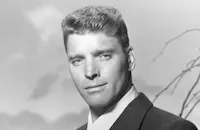
Burt Lancaster

Kirk Douglas
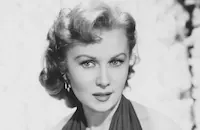
Rhonda Fleming

Jo Van Fleet

John Ireland

Lyle Bettger
Frank Faylen

Earl Holliman
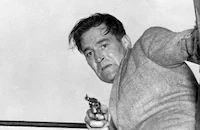
Ted De Corsia

Dennis Hopper

Whit Bissell
George Mathews
John Hudson
Deforest Kelley
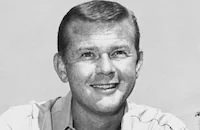
Martin Milner

Kenneth Tobey

Lee Van Cleef

Joan Camden
Olive Carey
Brian Hutton
Nelson Leigh
Jack Elam
Don Castle
Lee Roberts
Mickey Simpson
Frank Carter
Edward Ingram
Bing Russell
Ethan Laidlaw
Frank Hagney
Dorothy Abbott
Henry Wills
William S. Meigs
John Benson
Richard Reeves
Roger Creed
Robert C. Swan
Len Hendry
Gregg Martell
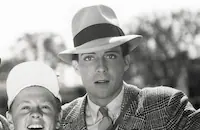
Dennis Moore
Trude Wyler
John Maxwell
Tony Merrill
Henry B. Mendoza

Charles Herbert
Tony Jochim
James Davies
Joe Forte
Max Power
Courtland Shepard
Morgan Lane
Paul Gary
Crew
Alfred Alexander
George Almond
John A. Anderson
Bill Avery
Ralph Axness
C. Bell
Romaine Birkmeyer
Richard Blaydon
Malcolm Bulloch
Frank Caffey
Elmer Cannon
Frank Carroll
Sam Comer
Tom Conroy
R. D. Cook
Ed Crowder
William C. Davidson
C. D. Drew
Pat Drew
George Dutton
Bob Fender
Gary Fifield
Mickey Finn
Gordon Fleming
John P. Fulton
Archie Gardiner
C. F. Girard
Bob Goodstein
Bill Greenwald
S. Gross
Tom Hadley
Grace Harris
Joseph H. Hazen
Edith Head
Warren Hoag
Hayden Hohstadt
Clem Jones
Cline Jones
John Keever
Al Kelly
L. Kirpatrick
Seymour Kline
Arthur Krams
Charles B. Lang Jr.
Winston Leverett
Harold Lewis
Olive Long
Bill Lord
Warren Low
Bert Mckay
Ken Meade
Kyme Meade
Curtis Mick
Jim Miller
Hedy Mjorud
J. Moore
Michael D. Moore
Richard Mueller
Paul Nathan
Paul Nathan
Gordon Palmer
Hal Pereira
A. Petersen
Foster Phinney
Tony Regan
Leonora Sabine
Jack Saper
Bob Simpson
Jack Stone
Dwight Thompson
Dimitri Tiomkin
Dimitri Tiomkin
Dee Turner
Walter Tyler
Leon Uris
Ned Washington
Marvin Weldon
Wally Westmore
Harry Whittingham

Photo Collections
Videos
Movie Clip




Hosted Intro



Film Details
Technical Specs

Award Nominations
Best Editing
Best Sound
Articles
Gunfight at the O.K. Corral
You probably have a passing familiarity with the basic storyline. It's 1881. Earp and Holliday are gun-slinging compatriots in the town of Dodge City, where Earp is also the marshal. Earp is ready to hang up his guns and settle down with a beautiful gambler named Laura Denbow (Rhonda Fleming) when he's contacted by his brother Virgil (John Hudson), the marshal of the aptly named burg of Tombstone, Arizona. Virgil needs help controlling the Clanton-Ringo gang, whose members are mercilessly terrorizing the locals. Earp and Holliday, living, as they do, by a code of honor, take it upon themselves to ride out to Tombstone and try to make peace. Eventually, things come to a head at the O.K. Corral, where everyone starts shootin' and hollerin' and dyin'.
In 1962, Sturges wrote an article in Films and Filming magazine that clearly delineates the ground rules for making this type of picture. In that piece, he maintains that "people's minds like discipline, so, like the ballet, westerns are always done the same way. If you go hear Beethoven, you don't complain that it was played exactly like the last time. It's not supposed to be different. And a western is a controlled, disciplined, formal kind of entertainment." That discipline certainly extends to the titular gunfight, which ran a mere 30 seconds and contained 34 shots in real life, but is stretched out to a violent five minutes in the picture. Apparently, there's discipline, and then there's disciplined excitement. The sequence took a full four days to film.
Lancaster, who basically falls into his silent-and-stoic routine (and looks great in a cowboy hat), is never less than serviceable in Gunfight at the O.K. Corral. Douglas, on the other hand, progressively coughs himself to death as the consumptive Holliday, which wasn't as easy as it might seem, given that movies are shot out of sequence. The actor plotted out exactly how hard he would cough, and exactly when he would do it, in order to create the illusion that Holliday is on his way out, regardless of whether or not he takes a bullet from the Clantons.
Douglas and Lancaster had previously worked together in I Walk Alone (1948), and often saw each other at various Hollywood functions. But, as Douglas recounts in his entertaining autobiography, The Ragman's Son, they didn't become friends until Gunfight at the O.K. Corral, which lead to some pretty loose-and-easy moments on the set. For instance, they couldn't focus during a scene in which an unarmed Lancaster is surrounded by several men in a saloon, only to be rescued by Douglas, who steals another man's gun and tosses it to Lancaster. "We go out on the porch," Douglas wrote, "and Burt says to me, 'Thanks, Doc.' I was supposed to say, 'Forget it.' When I came to 'Forget it,' the ridiculousness of the scene - our great bravery, our machismo - made us howl. We did the scene over and over. It just made us laugh harder." They were finally laughing so much, an angry Sturges had to send them home for the day."
Regardless of that moment of giggling harmony, Douglas and Lancaster, who both were famously stubborn men, often disagreed with each other. When the American Academy of Dramatic Arts paid tribute to Douglas on April 6, 1987, Lancaster made a speech about his old friend, in which he noted, "Kirk would be the first person to tell you he's a very difficult man. And I would be the second."
Director: John Sturges
Producer: Hal B. Wallis
Screenplay: Leon Uris (based on the magazine article, The Killer, by George Scullin)
Cinematography: Charles Lang
Editing: Warren Low
Music: Dimitri Tiomkin
Art Design: Hal Pereira, Walter Tyler
Special Effects: John P. Fulton
Costume Designer: Edith Head
Cast: Burt Lancaster (Wyatt Earp), Kirk Douglas (John H. "Doc" Holliday), Rhonda Fleming (Laura Denbow), Jo Van Fleet (Kate Fisher), John Ireland (Johnny Ringo), Lyle Bettger (Ike Clanton), Frank Faylen (Cotton Wilson), Earl Holliman (Charles Bassett), Ted de Corsia (Abel Head), Dennis Hopper (Billy Clanton), Whit Bissel (John P. Clum), George Mathews (John Shanssey), John Hudson (Virgil Earp), DeForest Kelley (Morgan Earp).
C-122m.
by Paul Tatara

Gunfight at the O.K. Corral
Kenneth Tobey (1917-2003)
Born in Oakland, California on March 23, 1917, Tobey originally intended to be a lawyer before a stint with the University of California Little Theater changed his mind. From there, he went straight to New York and spent nearly two years studying acting at the Neighborhood Playhouse, where his classmates included Gregory Peck, Eli Wallach and Tony Randall. Throughout the '40s, Tobey acted on Broadway and in stock before relocating to Hollywood. Once there, Tobey soon found himself playing a tough soldier in films like I Was a Male War Bride and Twelve O' Clock High (both 1949); or a tough police officer in Kiss Tomorrow Goodbye and Three Secrets (both 1950). Such roles were hardly surprising, given Tobey's craggy features, unsmiling countenance and rough voice.
Needless to say, no-nonsense, authority figures would be Tobey's calling for the remainder of his career; yet given the right role, he had the talent to make it memorable: the smart, likeable Captain Hendrey in The Thing From Another World (1951); the gallant Colonel Jack Evans in the "prehistoric dinosaur attacks an urban center" genre chiller The Beast from 20,000 Fathoms (1953, a must-see film for fans of special effects wizard, Ray Harryhausen; and as Bat Masterson, holding his own against Kirk Douglas and Burt Lancaster in Gunfight at the O.K. Corral (1957).
Television would also offer Tobey much work: he had his own action series as chopper pilot Chuck Martin in Whirlybirds (1957-59); and had a recurring role as Assistant District Attorney Alvin in Perry Mason (1957-66). He would also be kept busy with guest appearances in countless westerns (Gunsmoke, Bonanza, The Virginian) and cop shows (The Rockford Files, Barnaby Jones, Ironside) for the next two decades. Most amusingly, the tail end of Tobey's career saw some self-deprecating cameo spots in such contemporary shockers as The Howling (1981); Strange Invaders (1983) and his role reprisal of Captain Hendry in The Attack of the B-Movie Monsters (2002). Tobey is survived by a daughter, two stepchildren, and two grandchildren.
by Michael T. Toole
Kenneth Tobey (1917-2003)
Quotes
There's always a man faster on the draw than you are, and the more you use a gun, the sooner you're gonna run into that man.- Wyatt Earp
Trivia
Notes
In August 1954, Hollywood Reporter reported that producer Hal Wallis had purchased the film rights to George Scullin's article "The Killer," which outlined the relationship between historical Western figures Wyatt Earp and John "Doc" Holliday. Although various articles list Stuart Lake's 1931 book Wyatt Earp, Frontier Marshall as an additional source text for Gunfight at the O.K. Corral, the book is not credited in the SAB or any contemporary reviews. Hollywood Reporter reported in January 1955 that Wallis was hoping to cast Burt Lancaster and Humphrey Bogart in the lead roles. In February 1955, Los Angeles Times reported that Barbara Stanwyck was likely to assume one the female leads in the film.
According to the file on the film in the Paramount Collection at the AMPAS Library, portions of the film were shot on location at the Empire Ranch in Tucson, AZ, as well as Phoenix, AZ. New York Herald Tribune reported that the Texas sequences in Gunfight at the O.K. Corral were filmed in Tucson, while the Kansas sequences were filmed near Phoenix. The Arizona sequences were filmed at the Paramount Studios lot in Hollywood, CA, although Los Angeles Mirror-News states that the gunfight itself was shot in Tucscon. Hollywood Reporter news items include Myna Lundeen in the cast, but her appearance in the released film had not been confirmed. Gunfight at the O.K. Corral received two Academy Award nominations: Best Editing (Warren Low) and Best Sound Recording (George Dutton and the Paramount sound department).
According to modern sources, when Burt Lancaster read in Hedda Hopper's column that actor William Holden had backed out of the role of "Bill Starbuck" in Hal Wallis' planned production of N. Richard Nash's play The Rainmaker (see below), he called the producer and agreed to appear in Gunfight at the O.K. Corral if he also received the title role in The Rainmaker. This film marked Lancaster's final commitment under his contract with Wallis; the two never worked together again. According to modern sources, the film grossed $4,700,000 in U.S. and Canadian rentals upon its initial domestic release. Modern sources add William Norton Bailey and Paul Bradley to the cast and credit Bill Williams as stuntman.
There have been many screen versions of the 1881 gunfight at the O.K. Corral. For additional information on the gunfight, and the Earp and Clanton families, see the entry for My Darling Clementine in AFI Catalog of Feature Films, 1941-50. John Ireland, who played Johnny Ringo in Gunfight at the O.K. Corral, played Bill Clanton in My Darling Clementine. For additional information about Holliday, please see the entry above for the 1941 Universal film Badlands of Dakota. Director John Sturges filmed a sequel to Gunfight at the O.K. Corral in 1967. Called Hour of the Gun, it starred James Garner and Jason Robards in the roles previously played by Lancaster and Kirk Douglas and was released by United Artists (see AFI Catalog of Feature Films, 1961-70).

Miscellaneous Notes
Released in United States Spring May 1957
Released in USA on video.
VistaVision
Released in United States Spring May 1957













